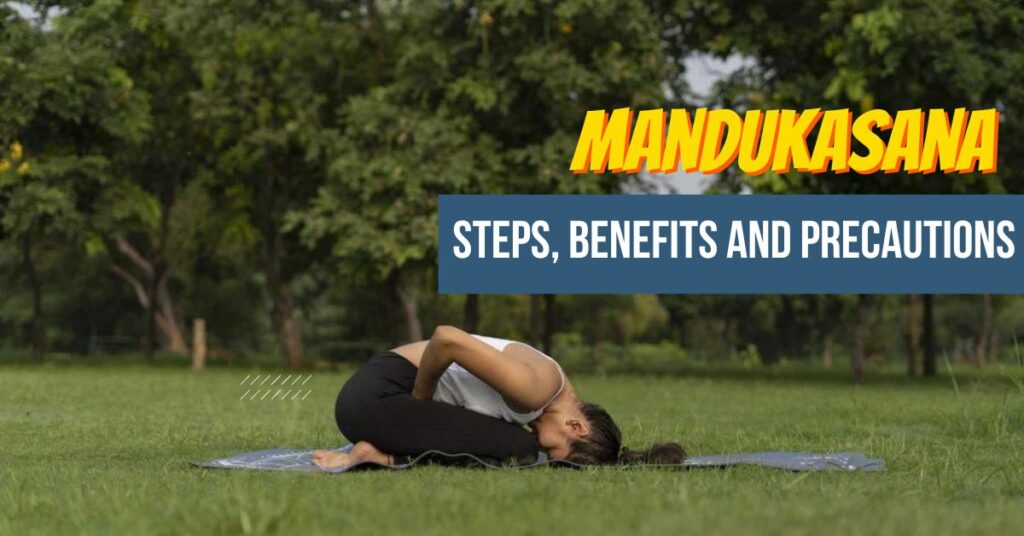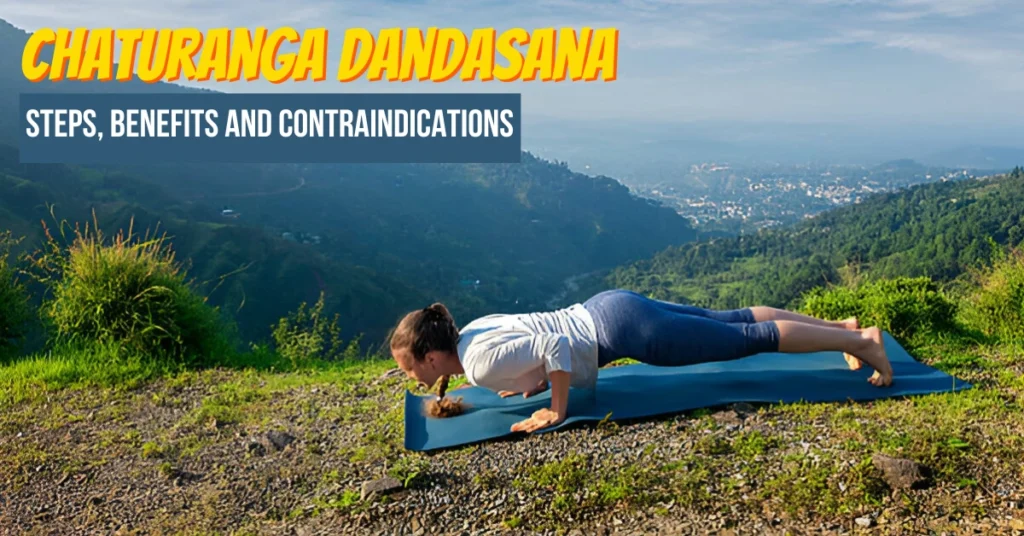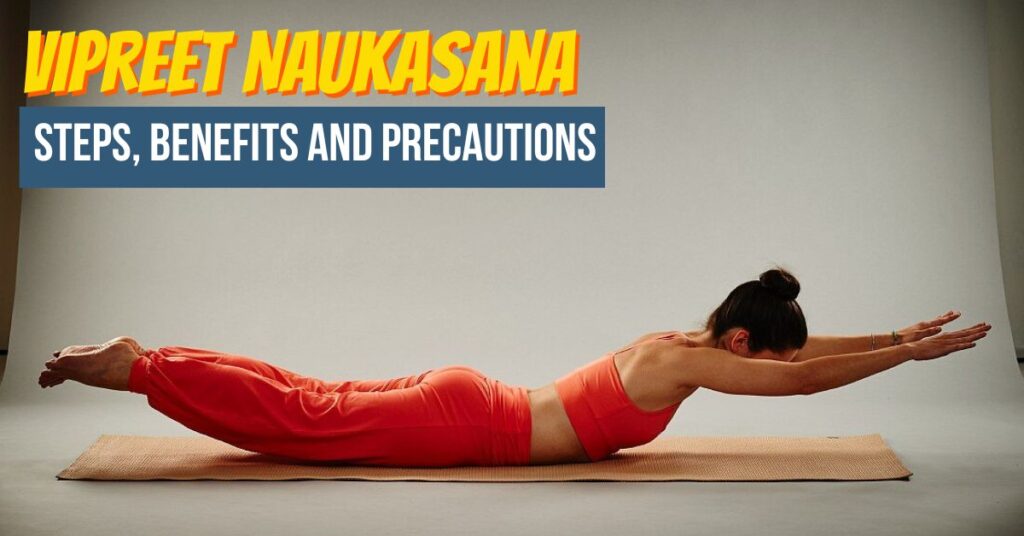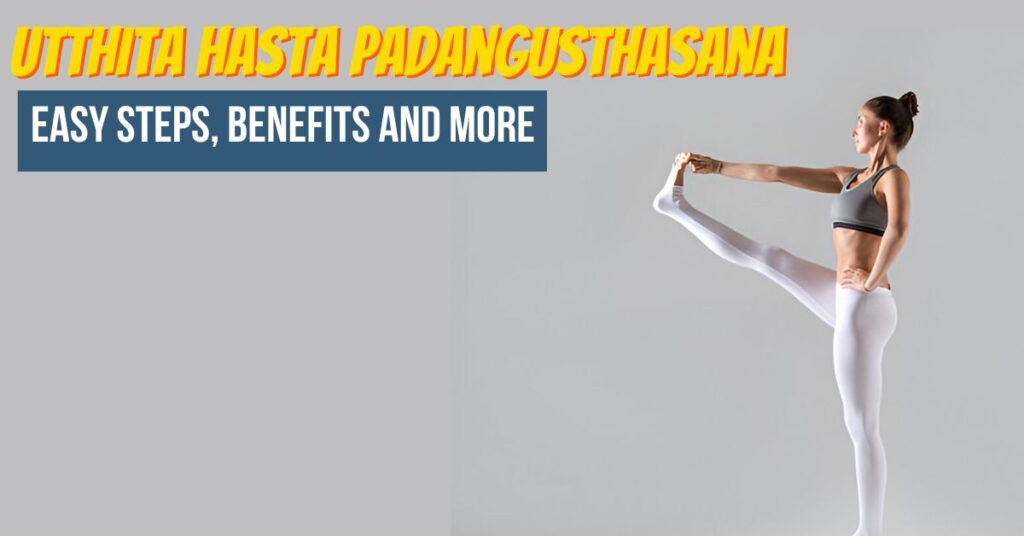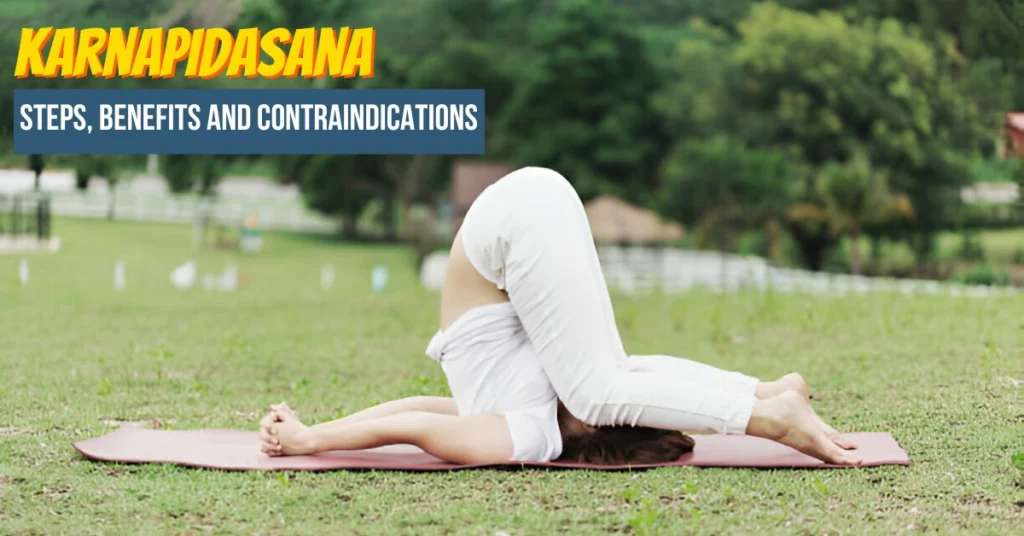Numerous asanas in yoga’s portfolio target different body parts & organs and lead to the development of a person’s mental, spiritual, and physical well-being. The best thing people can do to their lives is to make a change, and adding yoga to their daily routine can make a drastic change. If you are looking for yoga that might help you with your lower back pain, reduce fat from your belly and hip region, and provide many other benefits, then you have landed in the perfect place. Here, you will learn about one of the best yogas, Mandukasana. Now, we will tell you about Mandukasana and its benefits, along with how to perform Mandukasana, its precautions, and contraindications.
Meaning of Mandukasana Yoga
Mandukasana is a Sanskrit word that is made up of two words, ‘Manduka’ and ‘Asana,’ which are known as Frog and Pose, respectively. Hence, the posture is called the frog pose, as it also resembles the position of a frog while performing the asana. This is one of the most favorable yoga postures, and it is widely performed and highly recommended by trained professionals in the space of the spiritual world. Mandukasana yoga is a complete package of health benefits as it targets and tackles many health-related issues. Through the past experiences of many people, it has actually cured many health-related conditions, making Mandukasana information complete.
6 Mandukasana Benefits That Make Your Body Healthy
Executing the Mandukasana pose can lead to many benefits. As said above, performing any yoga completely leads to the overall development of a human being’s body. So, some of the major benefits of Mandukasana are explained in a very particular manner:
- It relieves back pain. If you are suffering from any back pain, correctly performing the frog pose may improve your condition.
- This asana helps manage diabetes as it regulates the sugar level in your blood, making it more normal and reducing the possibility of the issue.
- The frog pose improves the digestion of an individual as yoga targets the abdominal region, refreshing the digestive organs.
- It improves the blood circulation in your body as your whole body is involved while executing the asana.
- Mandukasana pose helps and improves an individual’s emotional and mental health. When one performs the asana, the whole body goes into a mode of relaxation, which leads to the development of mental and emotional health.
- This is one of the main benefits of Mandukasana, as it reduces fat from the belly and hips. It targets a particular region, eventually leading to the reduction of excess fat, making the Mandukasana yoga pose the most beneficial.
How To Do Mandukasana At Home (Mandukasana Steps)
The Mandukasana procedure is a very easy-to-execute pose, and it is widely performed due to its ease of use. It is performed while sitting on a mat or wherever you feel comfortable doing it. The pose is performed in a sequenced manner and should always be executed in the correct form and with the right technique:
- Start the asana in a position similar to Vajrasana by sitting in between heels and bending your knees.
- The next step is to grip your hands into fists and put both fists on either side of the belly button while applying pressure to the abdominal region.
- Then, inhale slowly while deeply expanding your chest and maintain a good posture while performing the Mandukasana steps accordingly.
- The next step is to exhale as you lean your torso forward while being in a comfortable and relaxed position.
- Then, bring your forehead into contact with the floor and allow yourself to breathe naturally.
- The final step includes the lifting of your upper body and breathing naturally and suitability.
Precautions To Keep In Mind While Performing Mandukasana
Each yoga pose, whether it’s Bhujangasana, Paschimottanasana, or Mandukasana, comes with its benefits and precautions. As we covered Mandukasana yoga benefits, we are going to tell you about Mandukasana yoga precautions. Some of the Mandukasana precautions that people should keep in mind while executing the pose:
- A proper warm-up is needed before performing the asana so as to avoid any injury.
- Avoid overdoing the asana and release the pose if you feel discomfort at any point while performing this asana.
- If you feel discomfort on your chest or your forehead, rest them on cushions according to your comfort.
Contraindications of Mandukasana | Things To Keep In Mind
There are multiple Mandukasana Contraindications and some of the main pointers to keep in mind before performing the asana:
- People suffering from lower back and hip injuries should avoid doing this asana.
- Individuals who might be recovering from abdominal surgery should also avoid performing this asana.
- People who are suffering from a knee injury should also stay away from performing it.
- Pregnant women should not perform this yoga as one of the essential Mandukasana Contraindications.
- If your blood pressure is usually high, then you should stay away from performing this asana.
Conclusion
Finally, we expect that your every query related to the yoga pose was clear and that everything you read about was very simple and detailed. Whether it was related to Mandukasana benefits or the Mandukasana procedure, every detail was covered. Performing this asana has actually benefitted many people, as Mandukasana benefits and precautions are tried and tested and have cured many health-related problems.
Frequently Asked Questions (FAQs)
1. Can Mandukasana cure diabetes?
If a person’s sugar level is high, then performing the asana could actually help him/her, as the Mandukasana steps and benefits can enhance insulin production in the human body, which can help manage diabetes.
2. What is Mandukasana also known as?
Mandukasana is also known as the Frog Pose because ‘Manduka’ means Frog and ‘Asana’ means Pose; hence, the yoga pose is known as the Frog Pose.
3. Who should not perform Mandukasana?
Here is a list of individuals who should avoid practicing this particular asana:
- People suffering from back, knee and hip injuries should avoid doing the asana.
- Pregnant women should avoid doing this asana.
- Individuals who have high blood pressure should avoid this.
- One who is recovering from abdominal surgery should stay away from performing the asana.
